The history behind your birth certificate
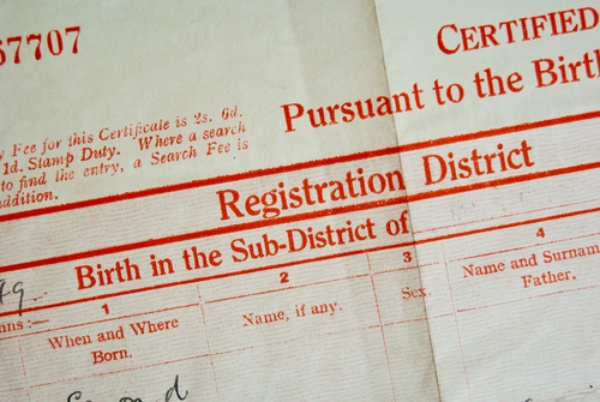
UK Birth Certificate
As the gateway to basic legal entitlement, birth registration is one of our most fundamental human rights: the United Nations Convention on the Rights of the Child acknowledges that every child should “be registered immediately after birth”. In this article, Peter Turvey looks at the long and sometimes tortuous road to full birth registration in England and Wales.
 When, on 5 September 1538, Thomas Cromwell ordered the clergy to keep records of every baptism, marriage and burial that they performed, his proposal was greeted with suspicion. Was this going to lead to a stealth tax on Christian sacraments?
When, on 5 September 1538, Thomas Cromwell ordered the clergy to keep records of every baptism, marriage and burial that they performed, his proposal was greeted with suspicion. Was this going to lead to a stealth tax on Christian sacraments?
Cromwell insisted that this was not the case. Writing as vicar general of Henry VIII’s newly established Church of England, he argued that the purpose of keeping parish records was to avoid “sundry strifes, processes and contentions rising upon age, lineal descent, title of inheritance, legitimation of bastardy, and for knowledge whether any person is our subject or no.”
It’s interesting to notice that at the same time that the parish register system was established, one of its chief functions – to provide evidence of title to inheritance – was identified. The importance and potential legal status of these records was underscored by the care that was to be taken of them. Cromwell wrote: “for the safe keeping of the same book the parish shall be bound to provide… one sure coffer with two locks”.
In 1598, a further lock was added to the coffer, parchment replaced paper and a helpful back-up in the form of bishops’ transcripts was introduced. But despite this belt and braces approach, it was a fragile system that was easily undermined by the negligence of individual record keepers.
When George Rose proposed a Bill to overhaul the registration system in 1812, Hansard reports:
It must, he thought, be universally allowed, that parish registers were of great importance to all ranks and classes of people from the nobleman to the peasant; and it was highly desirable they should be regularly entered, and safely deposited. At present, instead of being kept in the house of the clergyman of each parish, they were kept in a very slovenly manner in the dwelling of the parish clerk, and he had found, as Treasurer of the Navy, numberless instances of the widows of seamen, who, from this culpable negligence, were not able to prove their marriages.
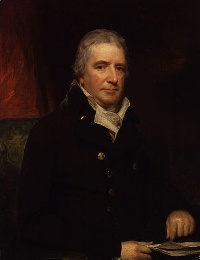
The resulting Act with its focus on the safe keeping of the registers “in a dry well-painted iron chest” from which they were only to be removed for legitimate purposes, acknowledges both the importance of the records themselves, and how open they were to abuse. The penalty for counterfeiting, defacing or altering an entry to the register book was transportation for the term of 14 years.
Rose’s Act for the better regulating, and preserving of Parish and Other Registers came into effect in January 1813. Its stated aim was to “greatly facilitate the proof of pedigrees claiming to be entitled to real or personal property”.
Unfortunately, it failed to address the greatest challenge to the integrity of Cromwell’s original system: the growth of dissent. To take the example of Halifax, in the 1740s 3.3% of the town’s baptisms appeared in nonconformist registers, but by the 1790s this had risen to 36%. As laws against Catholics and Dissenters relaxed, demand for the baptism rites of the Church of England diminished. Nevertheless, some nonconformists felt forced to make use of the practice of private or ‘half’ baptism so that their children would have the legal protection of an entry in the parish register.
In fact, the Protestant Dissenting Deputies (representing Baptists, Congregationalists and Presbyterians) had established a birth register of their own as early as 1743. But the legality of their records was so frequently questioned that in 1823 they took legal counsel and were advised that this was a problem that could only be resolved by Parliament.
It was ten years coming, but in 1833 the nonconformist John Wilks, MP for Boston, called for the appointment of a select committee to consider the state of parochial registries. His speech was a damning indictment of the lackadaisical English approach to registration, and of Rose’s Act in particular.
He denounced the state of the records, “the interpolations, intentional erasures and fraudulent destruction,” and insisted that even if Rose’s Act had “been perfectly obeyed, and if the parish registers were uniform and inviolate, secure and uncorrupt,” the system would still be inadaquate. What was needed was a registry of births, not a registry of baptisms.
There were, he believed, no less than 8,260 Dissenting and Methodist chapels and meeting-houses in England and Wales… and he had no doubt that the whole body of Dissenters… amounted to nearly one-third of the whole population of Britain…. For that great portion of the people, no provision, by the existing laws, supplied the means of effective and legal registration, which their security demanded. They kept, as was well known, congregational registries of baptisms and burials, and also a registry of births; but these registries were not public records, and extracts from them could not be received in evidence.
Wilks was clear: without an all-embracing and tamper-proof system of birth registration, identity, age, lines of descent and property rights could not be established. The time had come for civil registration.
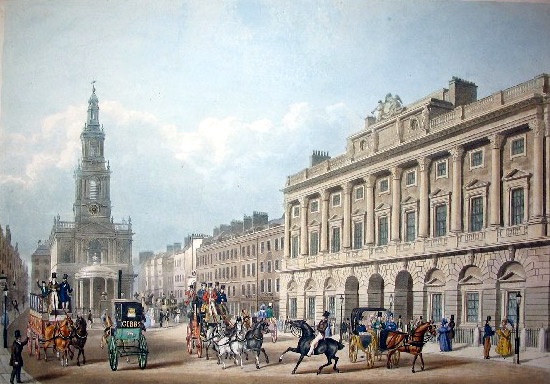
The 1836 Act for the Registering of Births, Deaths, and Marriages in England resulted in a tiered organisation of local registrars working under superintendent registrars, who in turn were answerable to the Registrar General in London. This was a much more robust system, with provision for “strong iron boxes”, for indexes and for back-up copies held at local and national level. However its weakness was that it wasn’t compulsory.
The onus was on the registrar “to inform himself carefully of every birth and every death which shall happen within his district”. Certainly, he had an incentive (2s 6d for the first 20 births and deaths collected each year, 1s for each entry thereafter). He had the legal backing of the Act: parents were required to provide information about a birth – but only “upon being requested so to do”. He even had help in the form of printed notices outside churches and chapels urging participation in registration.
But this was a largely illiterate population and there was bound to be confusion in the early days.
Reading R W Ambler’s paper on “Civil Registration and Baptism: Popular perceptions of the 1836 Act for Registering Births, Deaths and Marriages”, I can’t help thinking that the Church of England had played the role of registrar for so long that in many people’s minds the religious rite of baptism was inextricably linked with the legal function of registration.
On the one hand we find an increase in the number of baptisms just before the introduction of civil registration, suggesting that people thought baptism was equivalent to registering a birth.
On the other hand, we have a plethora of pamphlets with names like The Church Register not superseded by the New Register, Registration is not Baptism and A Few Plain Remarks on the Registration of Births and on the Impropriety of Naming Children before Baptism, all of which suggest that the Anglican clergy felt a need to stress the distinction between religious rite and civil record.
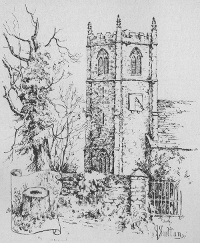
And finally we find several clear and tragic instances of a line being drawn in the sand. For example, in May 1840 the Lincoln, Rutland and Stamford Mercury carried a report about a clergyman who refused
“to read the burial-service over the body of a child six months old, the offspring of a parishioner named Ellis, on the plea that, although the child had been registered, it had not been baptised. The scene in the burial ground defies description: the reverend gentleman narrowly escaped a sound drubbing from the women, so offended were those in attendance on the occasion.”
Under-registration
There’s a good deal of controversy about what percentage of births remained unregistered after the Act came into effect on 1 July 1837. Some suggest as many as 10% of births were missed, rising to 15% in the cities. Others put the figure closer to 3%. In his first (1837-38) Annual Report, Registrar General Thomas Lister wrote that he had: “succeeded beyond the most sanguine expectation, in obtaining, during the first year of its operation, an almost complete register of deaths and marriages. The register of births is less complete; but this is owing to the want of a clause in the Act to render the information of births imperative.”
Later Registrar Generals strove to put a figure on the shortfall. In 1874 George Graham wrote,
“The precise extent of the deficiency cannot be determined but… the deficiency thus rapidly declined: calculated on 1,000 births occurring, it was in the three decades, 65 in the first, 29 in the second, and 18 in the third”.
He follows this up with a plea:
I have no hope of effecting the registration of all the births until the legislature arms me with the power of carrying out the intentions of the Act under the pressure of a penalty clause, which in practice would rarely or ever after the first year have to be enforced. If every parent of a child were directed to give early information of its birth to the registrar, and subjected to a penalty for neglecting this duty… I confidently believe that few births would escape registration. The record would be complete…
Unfortunately, Graham’s figures are partially undermined by his own 1878 report in which he voices his suspicion that, overall, non-registration stood at 5% during the 39 and a half years since registration began. The two statements conflict. Writing in 1874, Graham estimates under-registration as 3.73% averaged across three decades. Writing in 1878, he estimates under-registration as 5% averaged across almost four decades.
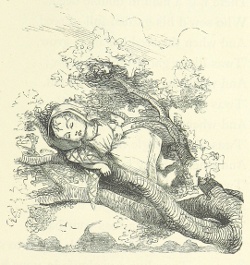
The important point to bear in mind is that Graham’s more extravagant figure was published after he had achieved his stated goal of compulsory registration (introduced in 1875). My own opinion is that for much of his time as Registrar General, Graham was a man working to targets that he was unable to achieve. Once he was in a position to do better, he could revise his previous failures upwards.
It’s generally agreed that birth registration increased throughout the mid 19th century, with the only blip being caused by the Vaccination Act of 1853. This tied the compulsory vaccination of all infants to their registration, and parents could be fined for non-compliance. As it was the local registrar who informed parents of their legal obligation to vaccinate their child against smallpox, parents who feared vaccination avoided the registrar.
However, even before the introduction of compulsory registration in 1875, non-registration of births fell dramatically. In The Measurement of Population Growth, Methods and Results, Kuczynski writes: “In the third quarter of the century the deficiencies were so small that no numerical test could possibly prove them conclusively, since even the best test involves a considerable margin of error.”
It was on the all-important date of 1 January 1875 that the Registration of Births and Deaths Act 1874 came into effect and registration became the responsibility of the parents, or the householder where the birth took place, on penalty of a £2 fine.
Colin Rogers reports that, “the number of genealogical complaints about births being unregistered drops significantly after 1875”. From this I think we can infer that by 1875 the figure for under-registration of births must have been less than 2%, perhaps less than 1%. Consequently, as a genealogist you can breathe a sigh of relief if a vital event occurs after 1875 – the odds are very high that you will find it. If you can’t, it is much more likely to be caused by a mis-indexed registration than a missing registration.
Over a century after the introduction of compulsory birth registration, the £2 fine is now £200 and there remains, as ever, a small amount of uncertainty about the level of non-compliance. The GRO acknowledges that “approximately 20 births are unregistered within the first 12 months of the event” with the proviso that “this may be an underestimation as we can not take into account any births that take place outside of the health service”.
Nevertheless, I think it’s fair to say that we have reached the brave new world that Registrar General George Graham longed to see, when…
the record would be complete: the missing links in pedigrees would be reduced to a minimum; children would be under the protection of the law, and they would no longer be under the many disadvantages arising from inability to prove their age and parentage, by a birth certificate.
2025 Anglia Research Services All Rights Reserved.
Anglia Research and Anglia Research Services are trading names of Anglia Research Services Limited, a company registered in England and Wales: no. 05405509
Marketing by Unity Online










